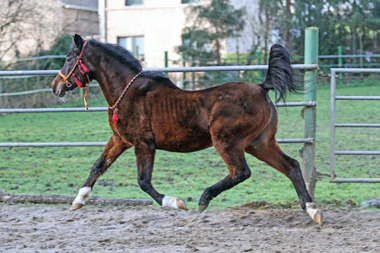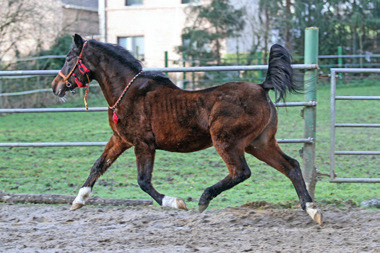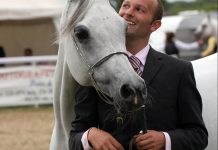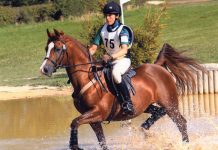Words and photography by Betty Finke
It is early in January as I write this, and I’m back from my first photographic appointment with an Arabian horse. Highly unusual at this time of year but there is a story behind it.
Let us take a big leap backwards – 27 years, in fact – to the year 1989, when I went to see a small German breeder. He had just a handful of Arabians, but they were special in that they were descended in tail female line from the very rare family of mare known as Mekka. Mekka was a small grey mare foaled in 1940 at Ilok, in what was then Yugoslavia, who had somehow ended up in Germany after World War II without papers. Rescued from a circus, she became a foundation mare in post-war Germany, although her breeding could never be verified. Like the Veragua mares of Spain, her identity as a pure-bred Arabian was proved by her brand, but her pedigree was lost.
The breeder I visited back in 1989, now many years dead, had based his programme on a mare called Windfee (Jarys x Wiszi), which translates as wind fairy, a great-granddaughter of Mekka with predominantly Polish breeding. He still had a daughter, a son, and a granddaughter. Sadly the colt, who grew up to become a handsome stallion and was shown under saddle, was never bred from. The star of the lot was the two-year-old filly, Hasswanka (Shahwan (by Said) x Hassalina (by Blue Hassan)). She was small, but bursting with type and charisma, and she had a superb trot that she was only too pleased to show off. In fact, a born show horse! Back then, shows were very different from what they are now, and she was quite successful and never failed to get applause for her movement.
This was my only visit there, and those horses somehow dropped off the radar during the following years. Fast-forward to autumn 2015, and I was having a chat with another small breeder at a show – in the course of which it emerged, to my complete astonishment, that Hasswanka was still alive, and I was talking to her owner! Naturally we discussed my coming to see her, but this was at a very busy time of the year and getting on for winter, so nothing came of it at first.
Sometime around Christmas, I got a call from a mutual friend who told me: “If you want to see Hasswanka, you’d better make it soon. She’s isn’t doing so well.” This is why I found myself, at the beginning of January, on a very cold, but fortunately sunny, day, travelling to visit a horse I hadn’t seen in 27 years.
Fortunately, the old lady’s condition had improved by then. And there she was: a tiny 29-year-old mare, just 14.2 hands tall, with a thick winter coat and a low back and rather wobbly hind feet. She walked out into a muddy paddock and, at the flick of a plastic bag, almost instantly launched into a jaw-dropping, powerful trot that would put many show horses to shame! You’d have thought no time had passed at all, if it hadn’t been for the woolly coat and the low back.
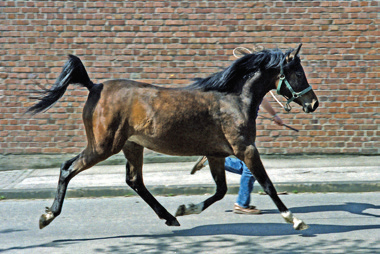 |
 |
| Top: Hasswanka in 1989 and above in January 2016. |
I am happy to say she has a good home, and I am hoping that she might yet see her 30th birthday. The only sad thing is that, despite many attempts, her owner has not managed to breed a foal from her. In other circumstances, this would have been an obvious case for ET – and certainly justifiable, given the rarity of this family – but her owner would not subject her mares to the process. You have to respect that. So Hasswanka found other occupations in life, such as endurance riding, carrying her owner’s son during a school play, and playing nanny to the small stud’s weanling foals, including the now resident stallion.
It is a pity that this family is dying out, sharing the fate of others that are outside the limelight of the show-ring. Although, in this particular case, it may not be that far removed from the stars, after all. While the identity of Mekka was never established with certainty, circumstantial evidence indicates that she may have been a mare called Kerbella, by Koheilan IV-3 out of Kisil. If this were the case, she would have been from the family of Szamrajowka 1810 – none other than the foundation mare behind Janow’s ‘P’ family, whose most famous member was called Pianissima (Gazal Al Shaqab x Pianosa).
Not that far removed, then, and yet worlds apart. But for anyone who loves the Arabian horse, they are just as much worth seeing – perhaps even more so, because they may not be around much longer.


